The Current Scenario
Just as the automotive sector in India was recovering, the second wave of the pandemic arrived, threatening to slam the brakes on all the progress made so far.
And even though the sector was undergoing a deep structural slowdown before the pandemic hit, this recent development seems to have pushed back auto sales even further.
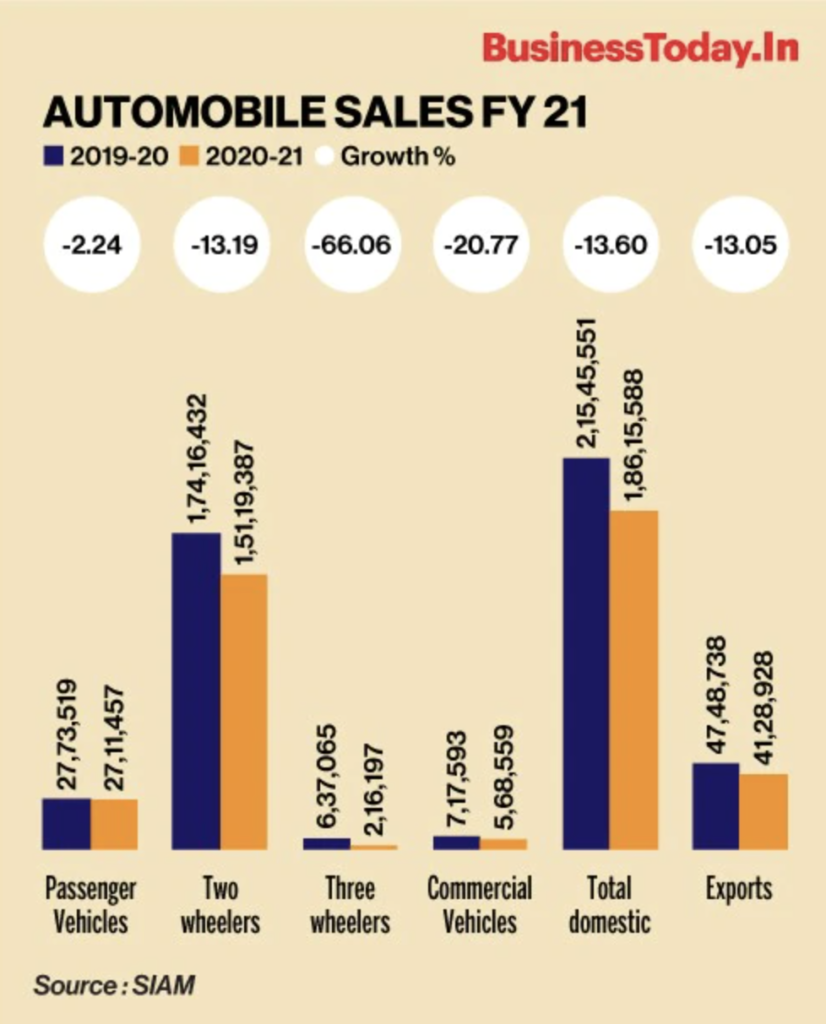
Across sectors, supply chains have seen disruptions and employees are hesitant to return to the plants unless they’re assured of their health and safety. There are possibilities of more local lockdowns on the horizon. Auto manufacturers and dealers like you must wonder how production and sales will play out in the coming months.
According to an IHS Markit report, India’s Manufacturing Purchasing Managers’ Index (PMI) rose to 52 in August 2020, showing positive growth and rebound in production volumes for the first time in six months.
In March 2021, an India Ratings and Research (Ind-Ra) report showed that the domestic auto sector showed positive growth for 8 months in a row. Private vehicle and two-wheeler sales volumes increased by 115% and 73% year-on-year, respectively. (See figure below)
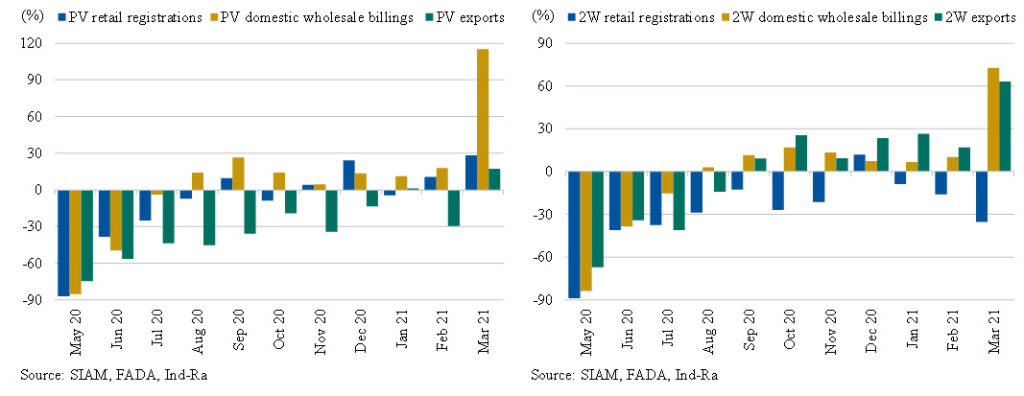
From these statistics and more, we can infer that Indian automakers and dealers like you are more than capable of staging a strong comeback by capitalizing on the demand and positive market sentiments.
Yes, it’s true that recovery from here on will require dedication, time and effort on behalf of all stakeholders.
Strategies Auto Brands Can Adapt to Race Ahead
1) Push to Digital
For all sectors during this pandemic, the common backbone to ensure business continuity has been the rapid adoption of digital technologies across the value chain. The auto industry is no different.
Increased use of technology has helped major auto players reap a host of benefits across:
- process optimization,
- supply chain management,
- inventory management,
- employee communication,
- customer interaction,
- innovations in design and manufacturing, and more.
Leading car brands like Mercedes Benz, Honda Cars, Volkswagen and BMW have already spearheaded the movement to digitalize customer touchpoints with dedicated online retail portals.
Another aspect of this development is the increased use of digital marketing powered by analytics: a new and effective approach to better understanding shifting consumer behaviour.
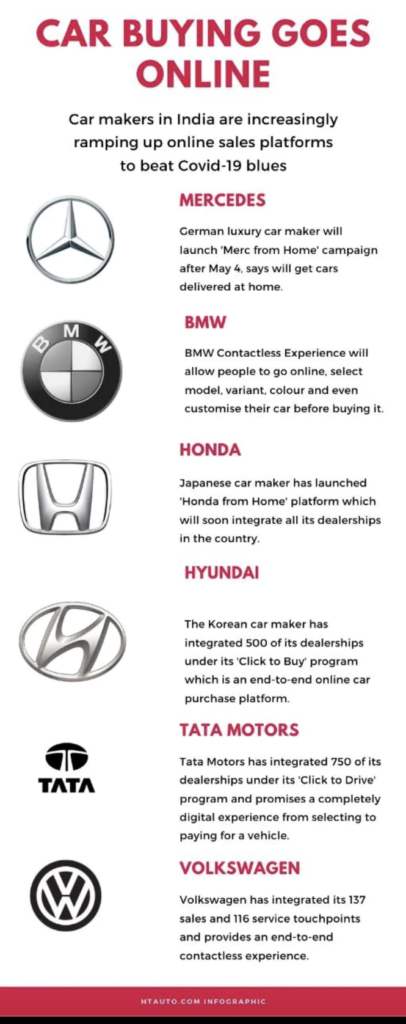
2) Increased Responsibility
The pandemic has made it necessary for auto players to show more responsibility towards their key stakeholders, the employees and customers.
After all, the path to achieving brand advocacy depends on seeking customer satisfaction by ensuring exemplary service on behalf of your staff.
Some ways you can achieve this are:
- Safer employee solutions including temperature sensors and proximity detectors to identify sick employees and maintain strict social distancing,
- Structurally adapted production lines, logistics and supply chain management to align with safety norms,
- Becoming more responsive to customer queries by leveraging digital chatbots, WhatsApp, etc,
- Adding hygiene-related features to cars like air filters, separation shields between riders, anti-bacterial surfaces and more.
Through the second wave, sanitary and social distancing conditions must continue to be maintained across dealerships to ensure that customers feel safe to visit retail stores without the risk of infection.
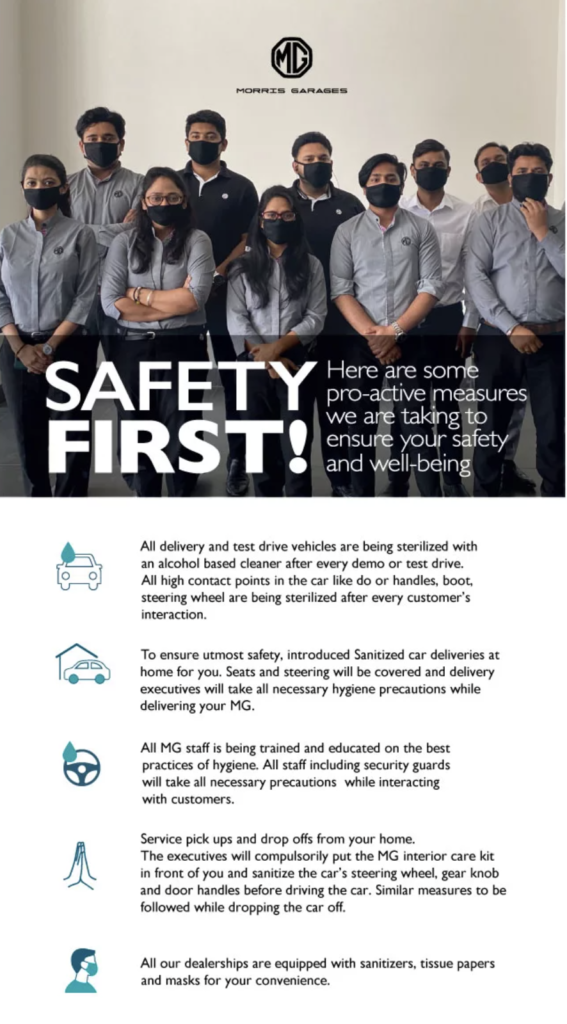
3) Maximized Localization
Perhaps one of the most positive and lasting effects of the pandemic for the Indian automobile sector will be the transformation to localized supply chains.
After enduring the shock of the economic disruption, many Original Equipment Manufacturers (OEMs) have turned their focus to low-cost suppliers to bolster the supply chain and set up their factories in cheaper labour markets.
Doing this strengthens the automotive industry’s core, makes it more self-reliant and export competitive. Seeking government support and cooperation is essential for this to be successful.
For example, the ŠKODA Kushaq is set to be the automaker’s first-ever car designed and made in India, bringing localized product development into mainstream focus.
Recently, auto manufacturers have also sought government aid for the localized production of electronic components like semiconductors (which is currently facing global shortages).
The Road Ahead
The current landscape provides the perfect opportunity for Indian automakers to lead the way by embracing all the various disruptive changes taking place across segments and gaining a competitive advantage.
Consumer demand is likely to spike soon, just like the last time. And when that revives, OEMs must be ready to engage with timely advocacy, hyper-personalized products and superior omnichannel experiences to translate that improving demand landscape into high revenues and business growth.
Join the other forward-thinking auto players by ramping up your digital advertising campaigns with HT Media. Our Digital news properties including hindustantimes.com, livehindustan.com and livemint.com, have their fingers firmly on the collective pulse of India and bring in over 139 million unique visitors to their websites. Find out more about partnering with us here.
Ready to take your brand to the next level? Connect with us today to explore how HT Media can amplify your presence across our diverse portfolio of 25+ brands and properties. Let's turn your brand vision into reality!




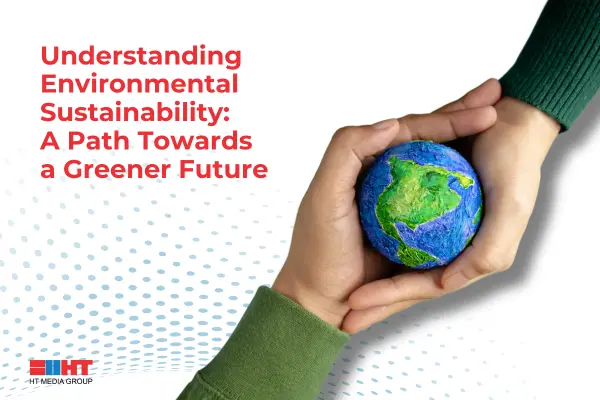













Comment